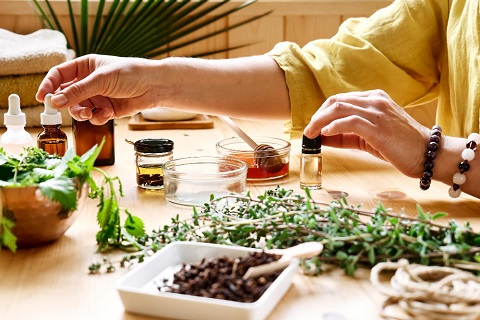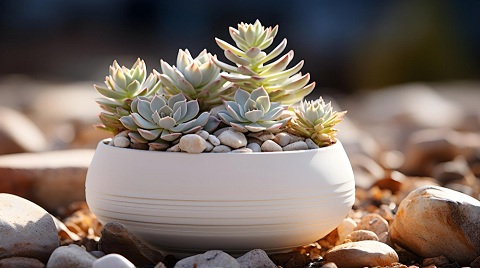Succulent plants, with their fleshy leaves and ability to thrive in arid conditions, have captivated plant enthusiasts for centuries. However, beyond their ornamental appeal, these resilient plants possess remarkable healing properties that have been recognized and utilized for generations. In this comprehensive guide, we delve into the fascinating world of healing succulent plants, exploring their medicinal benefits, cultivation techniques, and practical applications for health and wellness.
The Medicinal Wonders of Succulent Plants
Aloe Vera: Nature’s First Aid Kit
Aloe vera stands as a titan among healing succulents, revered for its multifaceted medicinal properties. Rich in vitamins, minerals, and antioxidants, this succulent has been used for millennia to treat a myriad of ailments, ranging from minor burns and cuts to digestive issues and inflammatory conditions. The gel found within its thick leaves boasts soothing and moisturizing effects, making it a staple ingredient in countless skincare products.
Echeveria: Enhancing Respiratory Health
Among the vast array of succulent species, Echeveria emerges as a potent ally in promoting respiratory wellness. With its ability to purify the air and increase oxygen levels, this plant offers relief for individuals suffering from respiratory conditions such as asthma and allergies. Additionally, the presence of phytochemicals within Echeveria leaves contributes to its anti-inflammatory and antimicrobial properties, further bolstering its therapeutic potential.
Kalanchoe: Harnessing Anti-Cancer Properties
Kalanchoe, commonly known as the “miracle leaf,” possesses remarkable anti-cancer properties that have sparked the interest of researchers worldwide. Studies have revealed that extracts from Kalanchoe plants exhibit cytotoxic effects on cancer cells, inhibiting their proliferation and inducing apoptosis. Furthermore, the presence of bioactive compounds such as bufadienolides underscores the potential of Kalanchoe as a natural alternative for cancer prevention and treatment.
Cultivating Healing Succulents: Tips for Success
Ideal Growing Conditions
To harness the full potential of healing succulents, it is essential to provide them with optimal growing conditions. These plants thrive in well-draining soil with ample sunlight, making them ideal candidates for outdoor gardens or sunny windowsills. Avoid overwatering, as succulents are susceptible to root rot in overly moist environments. Instead, adopt a watering schedule that allows the soil to dry out between waterings, promoting healthy root development and preventing fungal diseases.
Propagation Techniques
Propagation offers an excellent opportunity to expand your collection of healing succulents while fostering their growth and vitality. Leaf cuttings and offset division are two common methods used to propagate succulent plants. When selecting leaves or offsets for propagation, choose healthy specimens free from damage or disease. Allow the cuttings to callus over before planting them in a well-draining soil mix, and provide adequate warmth and indirect sunlight to encourage root development.
Practical Applications for Health and Wellness

Skincare Remedies
Harness the rejuvenating power of succulent plants to create nourishing skincare remedies that promote radiant and healthy skin. Combine freshly harvested aloe vera gel with soothing ingredients such as honey and coconut oil to craft a hydrating facial mask or soothing sunburn relief gel. The natural anti-inflammatory properties of succulents help soothe irritation and redness, making them ideal for sensitive or acne-prone skin.
Herbal Teas and Infusions
Infuse your daily routine with the healing properties of succulent plants by incorporating them into herbal teas and infusions. Steep dried Echeveria leaves or Kalanchoe blossoms in hot water to create aromatic brews that support respiratory health and immune function. Experiment with different combinations of succulent herbs and aromatic spices to tailor your herbal concoctions to your specific wellness needs.
FAQs about Healing Succulent Plants Nyt
Succulents should be watered sparingly, allowing the soil to dry out completely between waterings. The frequency of watering depends on factors such as the succulent species, environmental conditions, and the type of potting mix used. As a general rule, it’s better to underwater than overwater succulents to prevent root rot.
Yes, succulents can thrive indoors as long as they receive adequate sunlight and proper care. Choose varieties that are well-suited to indoor environments and ensure they have access to bright, indirect light. Additionally, provide well-draining soil and avoid overwatering to prevent issues like root rot.
While succulents can benefit from occasional fertilization, they generally require less fertilization compared to other houseplants. Use a balanced, diluted fertilizer specifically formulated for succulents, and apply it sparingly during the growing season (spring and summer). Avoid over-fertilizing, as it can lead to nutrient imbalances and damage the plants.
Signs of unhealthy succulent plants include:
Yellowing or wilting leaves
Soft, mushy stems or roots
Leaf drop or discoloration
Pest infestations
Stunted growth Regularly inspect your succulents for these symptoms and take appropriate measures to address any issues promptly.
While many succulent plants are considered non-toxic to pets, some varieties may cause mild gastrointestinal discomfort if ingested in large quantities. It’s always best to err on the side of caution and keep succulents out of reach of curious pets. Monitor your pets’ behavior around plants and consult a veterinarian if you suspect ingestion or adverse reactions.
Conclusion
The remarkable healing properties of succulent plants offer a wealth of opportunities for health and wellness. From the soothing gel of aloe vera to the anti-cancer potential of Kalanchoe, these resilient plants have earned their place as indispensable allies in the pursuit of holistic well-being. By cultivating an understanding of their medicinal benefits and practical applications, we can unlock the transformative power of healing succulents and embrace nature’s gift of vitality and renewal.












Find Us on Socials